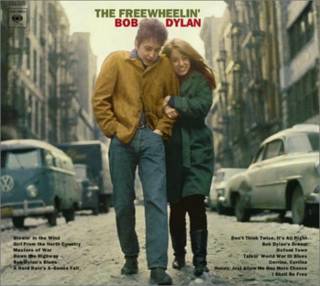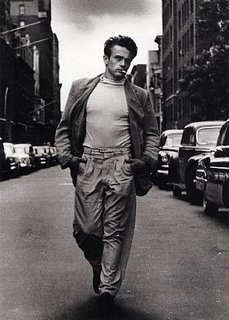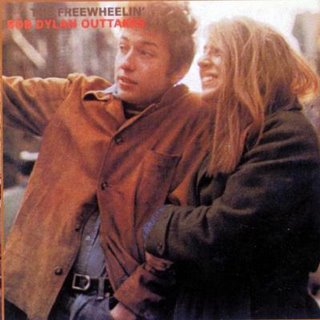"I've been listening to my legally obtained copy of the Friends & Neighbors Show and in the "Garage Rock" email the guy mentions The Swinging Medallions played his prom instead of Billy Stewart. I tried to do a little research of my own, cause this sounds like a real email to me, but came up cold.
"What do you think?" ~ from a comment posted by "Dreamtime Fan"
Y'know, "Dreamtime Fan," what I think is that you should definitely keep writing to me with your suggestions, as you sent me on a hunt that proved - to me at least - that at least some of the emails Our Host read on Theme Time Radio Hour were real, including this one....
"So, we got more emails than we know what to do with. So, this week we're gonna double-dip. This one comes from Guy Hornsby. He writes..."
"'Bob, I'm afraid your crack research team has let you down. On your show devoted to the songs of summer, you told listeners that Billy Stewart died June 17, 19 and 70. I know he died in January of that year, because my high school senior class in Brookland-Cayce, South Carolina had booked him to perform at our prom. Remember when high school proms had live music instead of deejays? -'"
"Matter of fact, I do. That was better! Guy continues to write..."
"'We had to scramble to come up with a local band. We were fortunate enough to get The Swinging Medallions. Their big hit was Double-Shot of My Baby's Love. To make a long story short...'"
"Too late, Guy..."
'I would like a Theme Time Radio Hour devoted to garage bands..."
"Garage bands? Well, first off, Guy, thank you for your note. I'd like to point out that there is already a program that focuses on garage music. I think that guy from The Sopranos does it. Not the Big Soprano, but one of the little Sopranos. But you know what, I enjoyed your letter so much, I think I got something for ya.
"By the way, Guy, what is a garage band? I've recorded songs in my garage. Am I a garage band?" ~ Bob Dylan, reading a second "listener email" on the "Friends and Neighbors" episode
I had first thought this email was the usual Theme Time Radio Hour mix of fact, fiction and in-jokes, but the more I dug into it, the more surprised I became.
Guy Hornsby
Was "Guy" a friend or acquaintance of the TTRH team who they were giving the wink and nod to in a fake email? A Google Search turned up as the first result a link to this "Guy Hornsby." Was the email a shout-out to a contemporary London-based deejay and producer of house music?
A little unlikely.
With some more digging I found this "Guy Hornsby," whose bio notes that he was a one-time BBC radio producer of "The Tony Blackburn Show," "[a] combination of soul and dance music, together [with a] risqué style of presentation..."
That Guy seemed to have more of a probable TTRH connection. Maybe Eddie G. or even Mr. D. was a fan of "The Tony Blackburn Show"? In any case, I was satisfied I had found the right guy, or Guy.
Turns out I was completely wrong. To paraphrase Occam's Razor, the simplest explanation is usually the correct one. But it would take me some more fact-checking to realize that.
"...my high school senior class in Brookland-Cayce, South Carolina..."
There ain't nothing like a good ol' challenge for the crack Dreamtime research team, although this one almost brought us to our knees as we tried variations of "Brooklyn," "Brooklin," and "Case" without success.
After too many repeat listenings and way too much research in the South Carolina groves of acadame, I finally produced a list of every goddamned high school in South Carolina, and discovered Mr. D. was saying "Brookland-Cayce." There is no town of that name, but there sure is a Brookland-Cayce High School, home of the Bearcats, in Cayce, South Carolina.
"Hmm," crack researcher Fred thought to himself. "Self, it'd be mighty interesting to see the 1970 yearbook for Brookland-Cayce."
Now, what I was thinking was that edition of the Brookland-Cayce yearbook might have the picture and name of one of the TTRH research team. Still wrong, as it turned out, but I was getting warmer. I decided to see what I could find out about the graduating class of Brookland-Cayce High School for 19 and 70. And guess who I found. That's right: one "Guy Hornsby, Class of 1970."
The email was real.
"...you told listeners that Billy Stewart died June 17, 19 and 70."
And indeed, Our Host did say that in the "Summer" episode, which first aired the day after the 4th of July in 2006, after playing Stewart's unique interpretation of "Summertime." It was more likely that Mr. D. let the crack research team down through a slip of the tongue, as he got everything else right except the month.
Billy Stewart did in fact die January 17th of that year when the car he was driving went off the road and plunged into the Neuse River in North Carolina, killing him and three members of his band. Stewart was two months shy of his 33rd birthday. Here's Billy Stewart with "Summertime," which should be worth the price of admission to Dreamtime alone.
"We had to scramble to come up with a local band. We were fortunate enough to get The Swinging Medallions."
As Guy and Our Host note, it wasn't all that unusual for high school prom committees to book semi-famous regional bands. All it took was money. Even though I had first greeted this email with a healthy dose of skepticism, Guy was real. Occam's Razor would say it was then also highly probable that Guy's senior class had originally booked Billy Stewart and after his death recruited The Swinging Medallions to play at the senior prom at Brookland-Cayce in 19 and 70. The Medallions home base was Greenwood, SC, about an hour-and-a-half drive from Cayce, certainly putting them into the "local band" category.
The Swinging Medallions second single, "Double Shot (Of My Baby's Love)", originally recorded by Dick Holler & the Holidays, reached #17 in the U.S. Billboard Hot 100 in 19 and 66. The Swingers would have a couple of other Top 40 hits in the late `60s, but "Double Shot" was the apex of their career, and they were working mostly frat houses, colleges, beach joints, armories - and maybe the occasional high school prom - by the `70s. In fact, "The Party Band of the South" still does shows today, still chuggin' away with the quintessential garage band song, "Double Shot (Of My Baby's Love)."
Thanks, Dreamtime Fan!
.






















